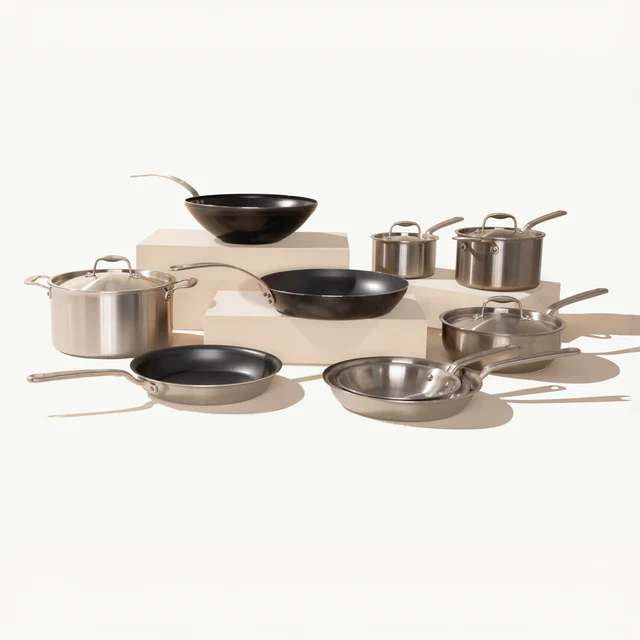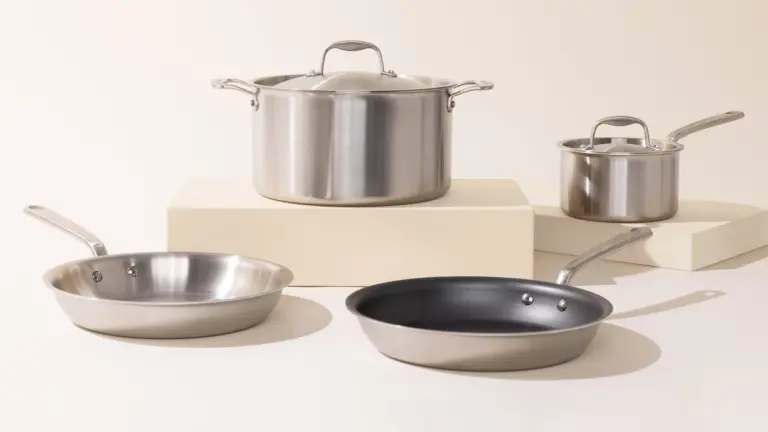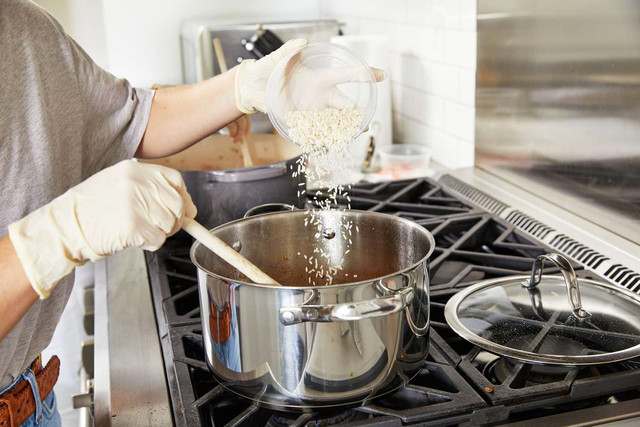
Black Friday Sale | Enjoy Up To 30% Discount
Exclusive Discount | 10% Off Sitewide - Verified
10% Off Orders Above $100+
Take 15% Off Your Regular Price

Free Shipping On Orders Over $49
Sign Up And Get 10% Off First Order
My sister Gina possesses exceptional culinary skills and has a discerning taste when it comes to cookware. She exclusively relies on battle-tested All Clad pans that have withstood the test of time, enduring the rigors of her cooking endeavors without flinching. However, there was an instance when I noticed a T-Fal pan in her collection that failed to meet her high standards. The bottom of the pan had acquired a slight dome shape, causing the hot oil to accumulate around the outer rim while leaving the higher center uncovered.
Consequently, the food in the middle of the pan cooked at a different temperature compared to the food in the oil around the edges. I often envision Gina discovering this flaw and promptly discarding the inadequate pan by launching it out of her back door, destined to find a new purpose in the sandbox.
Recently, I came across a company called Made In that offers a range of cookware promising premium quality, all proudly manufactured in the United States. Their website asserts that their direct-to-consumer sales model enables them to provide substantial discounts on their top-notch products. As an example, they highlight a $69 pan from Made In, which would typically retail for $150 elsewhere.
When I first started using the Made In pans, I noticed a potential issue with doming or concavity. To investigate this problem, I needed to find a way to measure the gap widths. My brother-in-law suggested using a feeler gauge, which is a handheld tool with blades of different thicknesses.
By using a six-inch bench knife as a straight edge and setting the center of that edge on the bottom center of the pan, I was able to measure the clearance at the other end and compare pans to pans. After measuring my sister's All Clads, my piecemeal set, and five Made In pans, I found that the four Made In pans had the most pronounced concavity, ranging between two and six times as far out as the average of all the others. This is a significant issue to consider when purchasing a 10-inch All Clad fry pan for $150.
At this juncture, I reached out to Wendy Dyer, the International Product Director at All Clad, in order to gain a better understanding of the situation at hand. In an effort to maintain the anonymity of the brand Made In, I refrained from mentioning their name and emphasized my desire for impartiality. I requested Dyer's expertise in deciphering the observations I had made.
Dyer promptly responded, stating that a slight curvature in the pan's surface is necessary, while an excessive amount is undesirable. This led me to believe that the degree of curvature varied depending on the specific pan. She further explained that inexpensive pans have a tendency to warp during cooking or when exposed to rapid temperature changes, such as going from a hot stove to a sink filled with water. However, she expressed surprise that I had noticed this issue straight out of the box.
According to Dyer, if a manufacturer lacks control over such matters, it raises concerns about their overall production process. This, in turn, prompts questions regarding the durability of the nonstick coating and the stability of the handle.
Additionally, Dyer mentioned that the most common method for testing the concavity of a pan is to place a straight edge across its bottom and measure the depth of the dip in the center. However, she acknowledged that my own method was acceptable as long as I had maintained consistency throughout my observations.
I am pleased to report that the nonstick surface of the one nonstick pan in the Made In set remained intact, and there were no issues with the handles. However, it is important to note that not all aspects of the pans were satisfactory. In correspondence with a Made In representative via email, it was confirmed that the pans were intended to have a flat bottom. As a result, a replacement set of pans was sent.
Unfortunately, these new pans performed similarly or even slightly worse compared to the five pans I had previously tested. The main difference was that these five pans exhibited a higher level of concavity, occupying the top five positions in terms of this measurement.
While it is essential to emphasize that this level of concavity is not catastrophic, it would certainly be disappointing for customers who have invested between $400 and $500 in Made In's five-pan, two-lid set known as "The Core."
To ensure a comprehensive evaluation, I followed the guidelines for measuring heat management in kitchen pans outlined in a New York Times article authored by esteemed food scientist Harold McGee.
The Heat Is On
To test for localized hotspots in six different pans, I began by cutting out circles of parchment paper to fit each pan and weighing them down with uncooked rice. Using my induction stove, I pointed each handle towards the six o'clock position and turned the burner up to medium for all pans.
The six pans tested were my 12-inch cast-iron skillet, a brand-new T-Fal nonstick, a three-quart All Clad saucier, and three Made In pans - the 11-inch sauté pan, and both the regular and nonstick ten-inch fry pans. All six pans performed well with no hotspots, although the cast iron, T-Fal, and Made In sauté pans heated up a bit more in the center, and the Made In nonstick was a bit lighter towards the handle.
The only outlier was the $30 T-Fal nonstick, which took longer to heat up compared to the other pans. It's worth noting that the induction cooktop used for testing is very efficient and heats quickly with induction-friendly pans. Additionally, using the right size burner for the pan and/or a thick-bottomed pan can result in even heating regardless of the material.
Hotspots were observed to manifest differently due to the doming effect in Made In's pans. This resulted in the formation of a ring of oil around the outer surface of the pan, leaving the top of the dome exposed. By utilizing my reliable ThermoWorks infrared thermometer, I was able to ascertain that the temperature of the oiled ring at the bottom of the nonstick pan reached approximately 460 degrees Fahrenheit, while the un-oiled center reached a temperature of 510 degrees. Although this discrepancy may not significantly impact the cooking process when preparing stir-fried vegetables, it could potentially result in a two-tone sear when cooking a steak or Spanish omelette.
After four minutes of cooking on medium-high heat, Made In's sauté pan, with the addition of three tablespoons of oil, registered temperatures in the high 300s around the outer region, while the center maintained temperatures in the mid-300s. Similarly, Made In's stock pot exhibited temperatures in the high 340s at its center, with a variation of approximately ten degrees towards the edges, either slightly above or below 300 degrees.
Burn Rate
The Made Ins are durable pans that exude longevity. Although they lack the polished elegance of a gleaming set, they still possess an appealing aesthetic. They provide a comfortable grip and have a satisfying weight, without being overwhelming. After utilizing them for a few weeks, I found them satisfactory. However, despite the company's assertion of exceptional quality for the price, Made In's pans may not currently offer the best value. The "Kitchen Sink" set from Made In includes seven pans and four lids, currently priced at $549, discounted from $669.
The situation becomes more complex when considering nonstick pans, as the coating inevitably wears off and necessitates replacement, regardless of the brand. A decent nonstick pan can be obtained for $30 (although this may be more challenging if using induction burners). In contrast, Made In's 12-inch nonstick fry pan costs $85, while a 12-inch All Clad nonstick fry pan is priced at $180. Although the latter two options possess a satisfying weight, it is difficult to justify their cost. Alternatively, one could opt for a nearly-nonstick 12-inch cast-iron skillet for approximately $30 or explore carbon steel options ranging from $30 to $50.
Made In is a newcomer in the market with promising potential, but the company appears to be grappling with production issues that need to be resolved before these pans can be considered a reliable choice.



